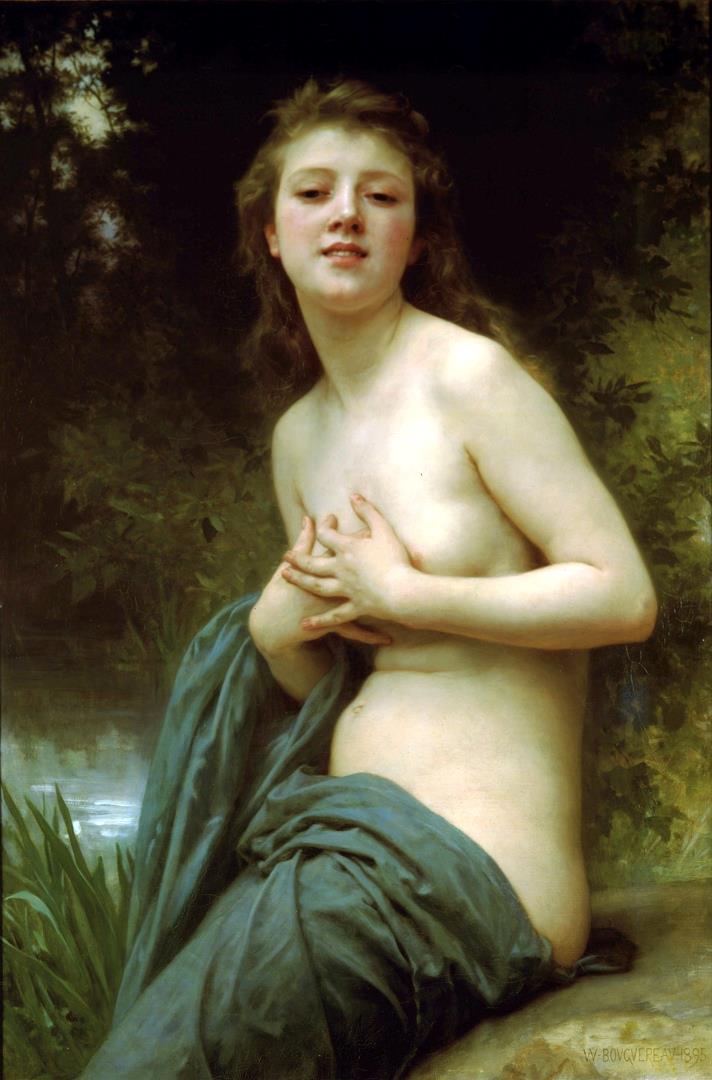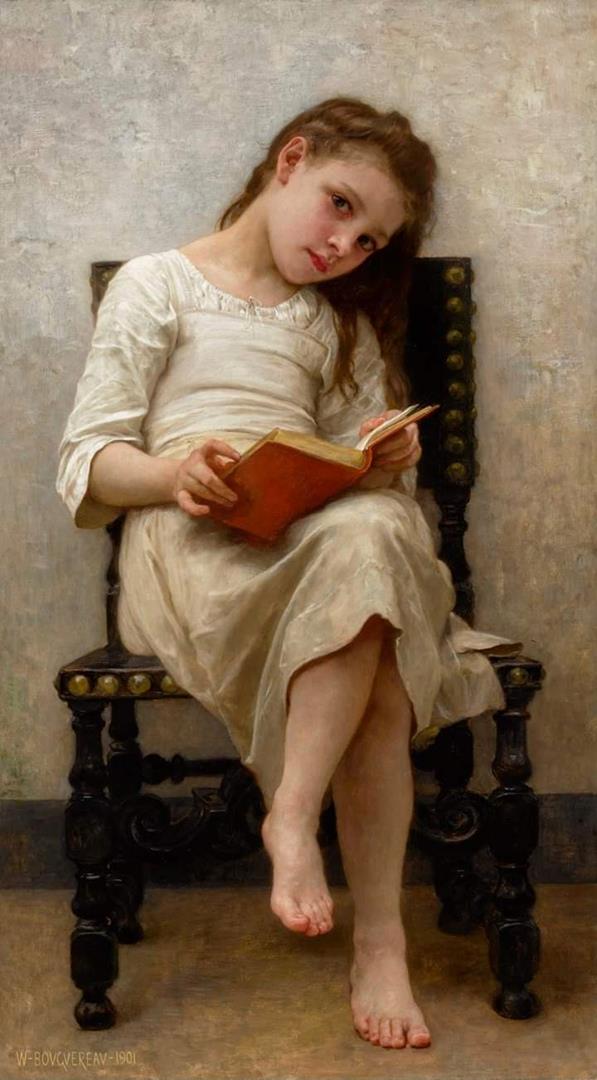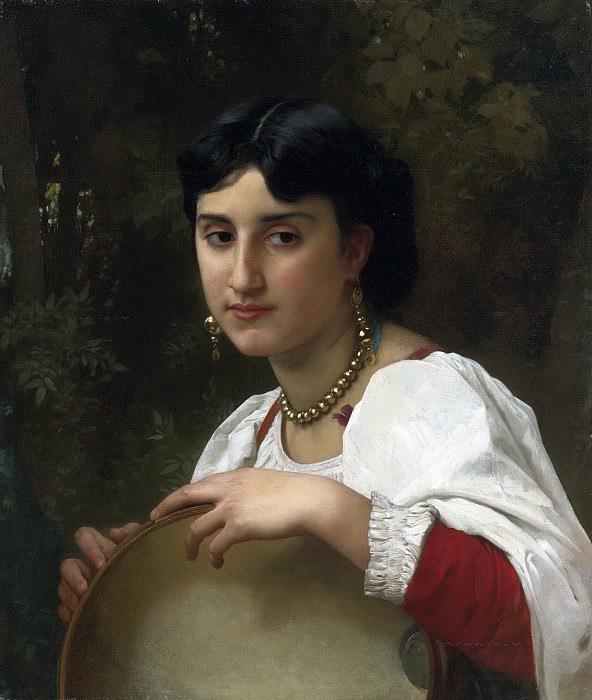Artist William Adolphe Bouguereau's Paintings
[ Part I ]
William Adolphe Bouguereau (Bouguereau) (1825-1905) was a renowned French artist of the nineteenth century, the most prominent exponent of salon academism, and the author of over 800 canvases. However, his name and great creative legacy were severely criticised and were relegated to oblivion for over a century. In 1825, William Adolphe Bouguereau was born into the family of the wine merchant Theodore Bouguereau in the French port town of La Rochelle, not far from the famed Fort Boyard, whose name would stand at the head of French painting virtually until the end of the nineteenth century.
Even in elementary school, the future William Adolphe Bouguereau's talent was evident: all of his notebooks were practically painted with paintings and diverse sketches. However, owing to family financial issues, a very young William was placed in the care of his 27-year-old uncle Yuzhen, who fostered in the young boy an interest in philosophy, literature, mythology, and religion. A talented adolescent starts college at the age of 14. And now, five years later, the 19-year-old lad is expecting his first artistic success: the "Best Historical Painting" prize. At this point, William Adolphe Bouguereau begins to fantasise about Paris, namely the Higher School of Fine Arts. But this took a lot of money, which he acquired by painting pictures of church members on jam labels.
Soon after, the desire came true, and William Bouguereau rose to become one of this school's top pupils. In order to have a better understanding of his future vocation, he attends classes in the history of clothing, studies archaeology, and participates in anatomical dissections. All of this moulded him into an academic painter. In 1850, the young artist receives the Rome Prize and a stipend for an annual study in Italy, where he studies the fundamentals of classical painting, becomes familiar with the spectacular works of the Renaissance's great artists, and finds his own renown. When William Adolphe Bouguereau returned to Paris, his fame skyrocketed. Bouguereau put quite a lot of time and effort into his designs. He arrived to his workshop early in the morning and departed after midnight. Like many great artists, he was plagued by self-dissatisfaction and an unquenchable desire for perfection. Because of this, his contemporaries dubbed him "Sisyphus of the 19th century."
And the gifted painter was likened to Rembrandt. "Rembrandt captured the essence of old age, whereas Bouguereau grabbed the soul of youth," they remarked. Impeccable grasp of the anatomy of the human body, meticulous craftsmanship, and interestingly chosen colours make William Bouguereau's paintings exceptionally lifelike. And, already at the pinnacle of his success, William Adolphe Bouguereau marries Marie-Nelly Monchablo, the mother of five children. But the painter's family's joy will be fleeting. A horrible catastrophe will strike his life: three of his children will die one by one, followed by his wife. The artist will endure a lot of pain and suffering, which will be shown in his work. He will paint canvases - "The Virgin of Consolation" and "Pieta" - one by one, expressing anguish, misery, and unrelenting torment.
And, in order to forget about his loss, William Adolphe Bouguereau committed himself totally to his work. He made portraits and paintings on historical, mythical, biblical, and allegorical topics in which nude female bodies and laziness predominated, causing dissatisfaction among many.
The painter was accused of immorality and excessive sexuality in his works, which ruined the youth. With each canvas, criticism grew louder and louder. In 1881, the French government placed William Bouguereau under administrative jurisdiction of Paris Salon officials. But Bouguereau continued to Paint in his own style, and as new trendy trends and orientations began to flood into art, he refused to accept them and resisted them with his whole body of work.
William Adolphe Bouguereau marries for the second time only 20 years later. His pupil Elizabeth Jane Gardner has been chosen, and she will dedicate herself totally to her husband's interests. The artist seemed to have discovered the long-desired peace of mind. But his joy is overshadowed once more by tragedy: his fourth son, the fourth of his five children, dies of TB. The master's health was severely harmed by the loss of his son. A sad attitude, cumulative weariness, and an uncontrollable addiction to booze and smoking all had a negative impact on his heart. And the outstanding painter died at the age of 79. At the start of the century, France, like the rest of Europe, saw a profound shift in its attitude toward painting. And, with the rise of modernism, the brilliant William Bouguereau, who had become an outcast in the art world during his lifetime, was forgotten by everybody, including his disciples, including the renowned Henri Matisse.
For over a century, his name and creative legacy were lost, and only in critical literature could one find a negative reference of William Bouguereau as a nudist painter. His paintings, which had been transported to the muses' storerooms, had been preserved in damp basements and attics for all these years. Beginning in the 1980s, art connoisseurs' attitudes on salon-academic painting shifted, and Bouguereau came to be regarded as one of the nineteenth century's most significant painters.
The first retrospective exhibition of the great painter was produced in 1984, with the sponsorship of the Montreal Museum of Fine Arts in Paris.
With tremendous effort, the organisers were able to collect and showcase William Bouguereau's legacy.
Many masterpieces had to be repaired because they had been stored for over a century in locations that did not match to the designated storage facilities. The exhibition of the outstanding artist's works was a huge success not only in France, but also in many other nations throughout the world. Bouguereau's paintings were reintroduced into art history and reclaimed their proper position among the masters of painting. The cost of William Bouguereau's paintings did not reach $10,000 during the initial auction sales in 1977, but by 1999, just one picture, "Cupid and Psyche," had sold at Christie's auction for $1.76 million. By 2005, the total cost of his effort had surpassed $ 23 million. This was certainly the outstanding artist's triumphal return.










































































































































No comments:
Post a Comment